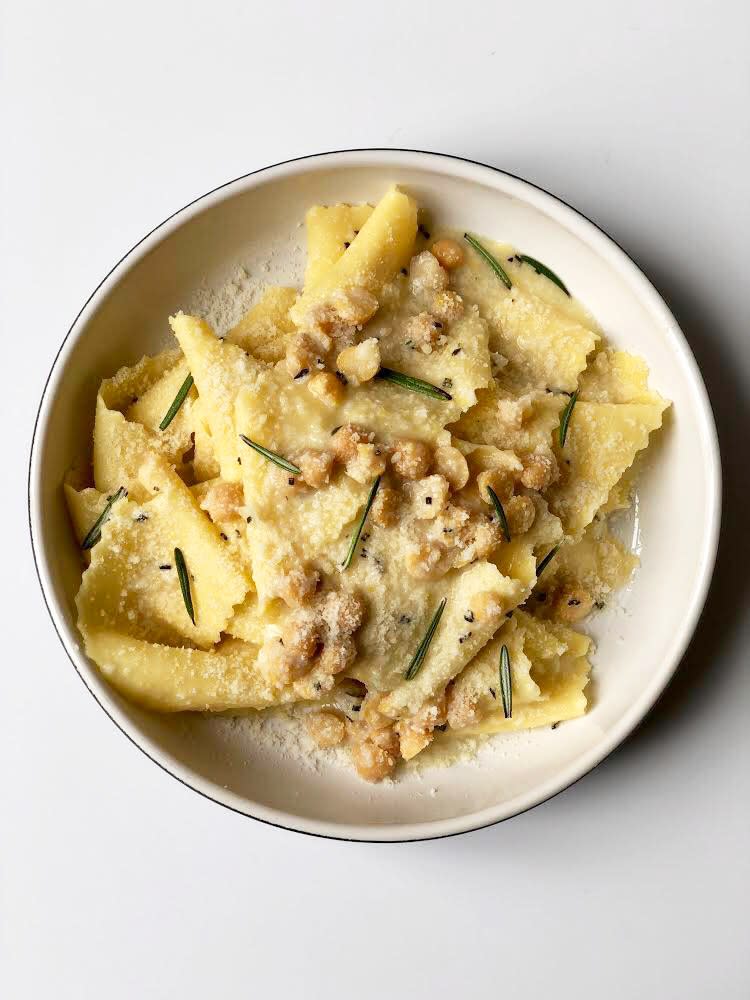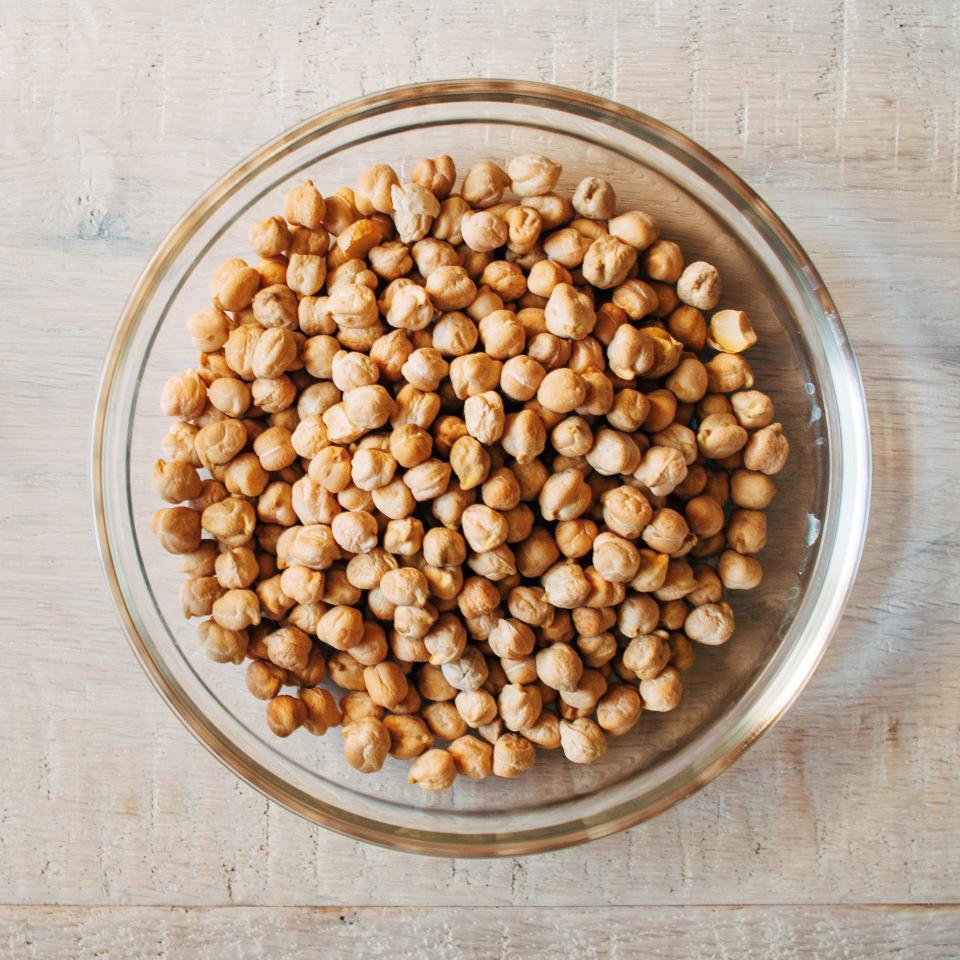Are Chickpeas the New Chic Peas?
Bengal grams, garbanzos, Egyptian peas—the chickpea, by any of its names, is beloved. So much so that its main product, hummus, has become a source of contention between all the nations who argue that it was on their land that hummus was born. Scholars have long been unable to determine the precise origins of the thousand-year-old spread, but some vehemently claim it pre-dates the Quran with Hebrew references, others maintain it is incontestably Arabic, and no one can seem to agree on anything.
Fast forward to the late 2000s, when a hummus awakening of sorts took place for those west of the Middle East. Dollops of hummus began making appearances as an appetizer in American eateries, stacks of tubs sat neatly at Whole Foods, and eventually the quickie marts caught on—you’d be hard-pressed to find a Brooklyn bodega without an inventory of Sabra.
And so America’s embrace of the Middle Eastern product fueled a culinary custody battle—a claim of ownership that plays into cultural identities and legacies; one which people are willing to fight for, literally. In 2009, a chickpea cold war began between Lebanon and Israel after one Lebanese man thought the way his nation could claim hummus as its own was by creating the world’s largest portion of it—a 4,532-pound plate. This in turn (and of course) inspired a Jerusalem-based restauranteur to one-up the Lebanese with a dish—an actual satellite dish—of hummus weighing over double that, at around 4 tons. You can guess what happened next. (A hummus retaliation from the Lebanese, with an 11.5 ton plate, in 2010.)
A resolution appears nowhere in sight, but what is increasingly clear is that there’s much more to the chickpea than hummus. The legume is the star of many global dishes—India simmers garbanzo beans in coriander, onion, and garam masala in the popular Chana Masala. The Italians dry chickpeas into a flour, fold it into a batter of water and olive oil, and fry up pancakes known as Farintas. Meanwhile, throughout the Levant and beyond, falafel is a fan favorite. And now, a whole new crop of chefs are calling on the powers of the chickpea in novel ways.

Buttered Easter Hot Cross Bun
Two Michiganders, Aidan Altman and Andrew McClure, have taken a chickpea byproduct and whipped it into a creamy, non-dairy butter for the masses. It’s called Fababutter, and its main ingredient is aquafaba, the leftover water used to boil and cook garbanzo beans. It’s a viscous liquid that mimics the properties of an egg and thus makes for a delicious base for meringues and more. “During the chickpea’s boiling process, the proteins, starches, and other soluble solids migrate from the seed to the water,” McClure explains of aquafaba, which is used as an emulsifier to blend the fats and waters in their brand-new butter. In addition to the aquafaba, there’s a touch of coconut oil and special seasoning. The result is a spreadable, can’t believe it’s not butter product that has caught the attention of Eataly buyers (Fababutter is available at all their locations) and chefs like Public’s Brad Farmerie. Perhaps the most delicious aspect might be the environmental benefits of Fababutter. The brand uses leftover aquafaba from major hummus makers, who leapt at the opportunity to sell a byproduct that otherwise goes to waste. “This leftover water is usually poured down the drains by the thousands of tons per day by large hummus manufacturing facilities,“ Altman says. “So we upcycle their aquafaba and put it to good use.”
And unlike other dairy-free butter alternatives, aquafaba is a full on replacement, proven to work in flaky croissants and fluffy Hollandaise sauce.
In Brooklyn, Michelin-star chef Missy Robbins serves a chickpea pappardelle with whole chickpeas, rosemary, garlic, and parmigiano at her new restaurant, Misi—it’s remarkable, unsurprisingly. Hers is 30 percent garbanzo bean, 70 percent flour ratio. “If you add too much, the pasta becomes cardboard-like,” the chef explains. For her, chickpea flour is used as a flavoring, not as a vehicle to reach veganism. “The chickpeas add an earthiness and an intense chickpea flavor to the dish.” And Robbins doesn’t stop there; at home, she uses boiled chickpeas completely in lieu of pasta, flavoring them with a simple red sauce and greens. Again, the chickpea does its job as the perfect substitute: “I feel like I'm eating pasta, but I'm not.”

But the most remarkable Chickpea-based Product of the Year Award undoubtedly goes to Micah Camden. You might know him as the man behind Portland’s Blue Star Donuts, with its line around the block. Early next year, Camden will open up Little Bean, an ice cream parlor where all of the chilled delights are made almost entirely out of chickpeas. While most have employed the chickpea for its beloved flavor profile, Camden set out on a culinary experiment to remove the flavor completely. He found success—there’s not a trace of hummus taste in any of his ice creams, which include Szechuan Strawberry, Mint Matcha, Triple Chocolate, Cookies and Cream, Blackberry Basil and more.
This writer was treated to a taste test from Camden himself, who had much to say about the wonders of the chickpea. It all began with a day-long belly ache, an ice cream hangover if you will, induced by his beloved Ben & Jerry's. With age, he explains, he couldn’t pound the pints like he once could, so he endeavored to create an ice cream he could enjoy without consequences. Persian by descent, Camden was familiar with the creamy, milk-like potential of a chickpea, and began to explore how he might push the limits of the garbanzo bean. First, he created chickpea milk (much like you would an almond), then played around with ridding the liquid of its delicious but not ice cream-friendly flavor profile. Through a beer-like fermentation process that separates the milk’s sugars and starches, he was able to skim off the top layer, a.k.a. the garbanzo-flavor. And eureka, his ice cream base was born. It’s a blank canvas for him to use wonderfully fresh and whole ingredients to flavor, and the result is an absolute dead ringer for dairy ice cream.

If that weren’t enough, it ticks all the boxes for even the most persnickety healthy eater (I’m fairly certain Gisele Bündchen and the Brady bunch would be allowed a serving). It’s non-dairy, gluten-free, soy-free, nut-free, and non GMO. But most of those qualities are a happy accident, as Camden does not refrain from eating anything. “I’m not gluten intolerant, I’m glutton intolerant,” he jokes. And like the cherry on top of this chickpea sundae, Little Bean will also please the environmentally-minded.
As Camden explains, chickpeas are a drought resistant crop, which means little water is needed in their harvest. Compare that to the almond, the most thirsty of all milk replacements: the chickpea requires 501 gallons to produce a pound whereas the almond demands more than double that, a hefty 1,929 gallons. And lucky for Camden, the Pacific Northwest is filled with chickpea farms (Washington State is the largest producer), and he sources all Little Bean’s chickpeas from a nearby farm under a 100 miles away. There’s little not to like, and unlike hummus, hopefully there’s nothing to fight about. According to Camden, “Little Bean has only one issue: picking your flavor.”


